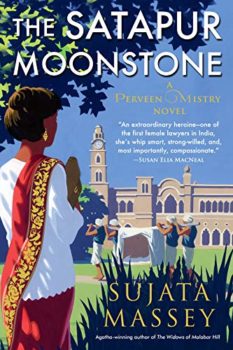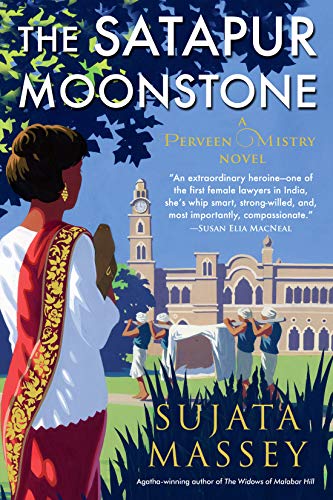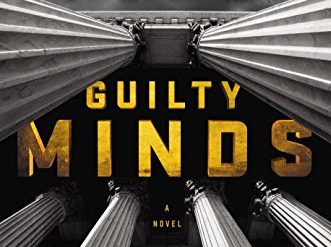
The Satapur Moonstone highlights an important aspect of Indian reality that few outsiders recognize: the princely states that help account for the country’s extraordinary diversity—diversity in language, culture, cuisine, and manner of dress. Because the sense of unending differentness that assaults any visitor is merely a reflection of the country’s long, conflict-filled history.
Estimated reading time: 4 minutes
More than 500 princely states in colonial India
It was not until shortly after India gained its independence from the British in 1947 that the country became a nation. For millennia, India had merely been a geographical expression, a name for the South Asian subcontinent that encompassed what is today Pakistan, Myanmar, and Bangladesh as well as India. And on August 15, 1947, when the country ended its link to Great Britain, it encompassed 565 princely states that covered 40 percent of the area and housed 23% of the population.
As Sujata Massey explains in The Satapur Moonstone, “Although the British government had power over approximately 61 percent of the subcontinent, the rest of India was a patchwork of large and small states and landholdings ruled by Hindus, Muslims, and a few Sikhs.” It was not until 1950 when these princely states were incorporated into either India or Pakistan.
The Satapur Moonstone (Perveen Mistry #2) by Sujata Massey (2019) 361 pages ★★★★★
In this engrossing sequel to The Widows of Malabar Hill, Massey dispatches Perveen Mistry to the tiny west Indian principality of Satapur. There the plucky woman lawyer, not long out of the University of Oxford, travels on a lucrative assignment for the Indian Civil Service (ICS) to sort out a dispute between the widow and the mother of Satapur’s late maharaja. The two women were quarreling over the education of the 10-year-old maharaja who would accede to the throne upon his eighteenth birthday. And Perveen is charged with finding a compromise.
Conflict within the royal family in a princely state
It’s 1921, with independence decades away. Given the power of the British Raj, the ICS exerts authority over the principality’s rulers. Perveen, then, is in effect the guardian of the young maharaja and his 7-year-old sister. And this makes her as well as the two royal women uncomfortable, since she has recently enrolled as a member of the Indian National Congress and is a follower of Mohandas Gandhi. She is just as eager as the maharaja’s mother to see the English gone from India.
When Perveen arrives at the royal palace, she immediately finds herself thrust into a fraught and dangerous environment. The elder maharani (grandmother of the current maharaja) is a nasty, dyspeptic old woman who has made her daughter-in-law a virtual prisoner in the palace. And Perveen learns that the maharaja’s father was not the only royal to die within the past year: his 13-year-old brother died just months ago on what is described as a hunting accident. To make matters worse, the younger maharani is convinced that someone has been trying to poison her and the children.
Of course, Perveen will navigate through this thicket of intrigue. But it won’t be easy, she herself will face death, and the politics of the situation will become even murkier before it clears up. Sujata Massey has written a compelling tale that casts a light on the often hidden reality of life in the princely states.
For related reading
This series is included in The best mystery series set in Asia.
I reviewed three other books in the Perveen Mistry series:
- The Widows of Malabar Hill – Perveen Mistry #1 (The first woman lawyer in Bombay solves a baffling mystery)
- The Bombay Prince – Perveen Mistry #3 (Murder in Bombay during the Indian independence movement)
- The Mistress of Bhatia House – Perveen Mistry #4 (Fighting crime in Bombay a century ago)
I’ve also reviewed two mysteries by Abir Mukherjee set in Calcutta during the same period: A Necessary Evil (Wyndham and Banerjee #2), reviewed at A royal murder in colonial India with hundreds of suspects, and Smoke and Ashes (Wyndham and Banerjee #3), reviewed at A brilliantly constructed murder mystery set in colonial Calcutta.
For similar titles, see The best Indian detective novels.
You might also enjoy my posts:
- Good books about India, past and present
- Top 10 mystery and thriller series
- 20 excellent standalone mysteries and thrillers
- Two dozen outstanding detective series from around the world
For an abundance of great mystery stories, go to Top 20 suspenseful detective novels. And if you’re looking for exciting historical novels, check out Top 10 historical mysteries and thrillers.
And you can always find my most popular reviews, and the most recent ones, on the Home Page.



























